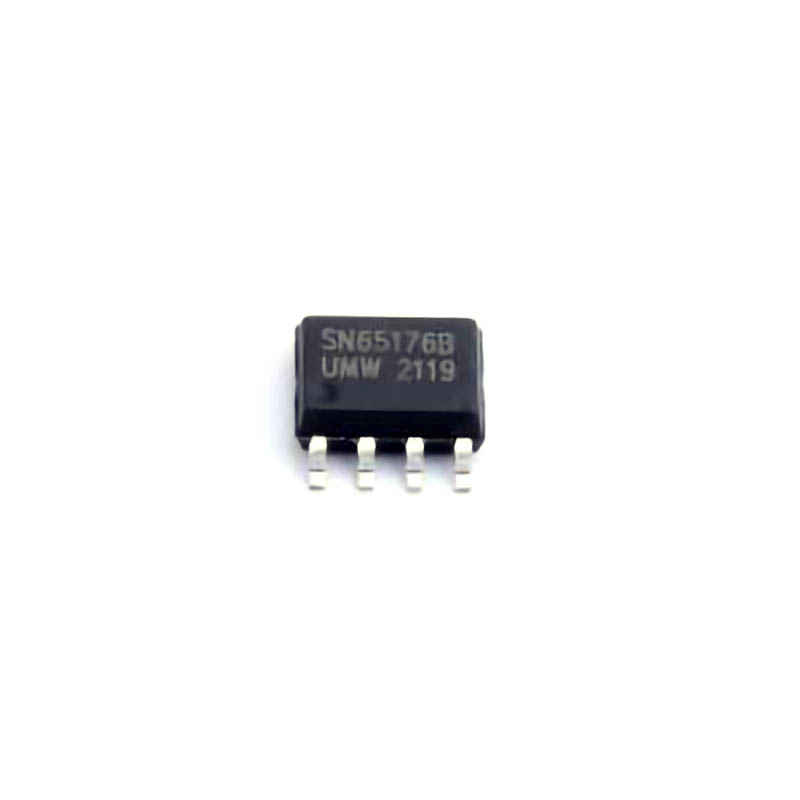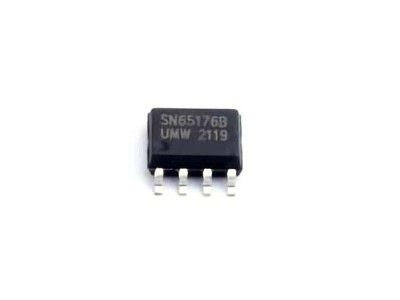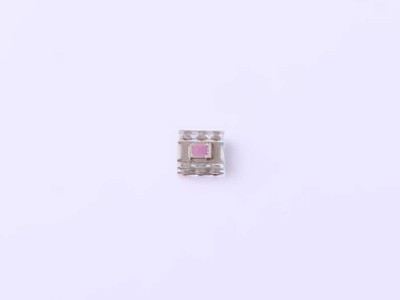
This article explores the reliability optimization and practical application examples of the SN65176BDR , a robust transceiver designed for RS485 Communication systems. It discusses the features and benefits of the SN65176BDR, its role in ensuring communication integrity in harsh industrial environments, and offers real-world application examples to demonstrate its utility in modern communication infrastructures.
SN65176BDR, RS485 communication, reliability optimization, industrial communication, transceiver, communication bus, network robustness, data integrity, industrial automation
Understanding the Importance of Reliability in RS485 Communication and the Role of SN65176BDR
In today's digital world, industrial automation, control systems, and various other mission-critical applications rely heavily on stable and reliable communication channels. Among the most widely used communication standards in these industries is RS485, which is recognized for its ability to transmit data over long distances and in electrically noisy environments. The reliability of the communication bus is paramount in ensuring the seamless operation of automated systems, and this is where the choice of transceiver becomes crucial.
RS485 is an industry-standard differential signal transmission protocol that is particularly popular in systems requiring high data integrity, long-distance communication (up to 4,000 feet), and robust performance in the face of electrical noise. The SN65176BDR is a highly efficient RS485 transceiver designed to optimize the reliability of data transmission over this type of bus, offering several advanced features that make it ideal for use in industrial settings.
Key Features of SN65176BDR for Reliability Optimization
Differential Bus Communication:
The SN65176BDR supports differential signaling, which is immune to common-mode noise. This feature allows it to maintain signal integrity over longer distances, even in the presence of electrical noise. By using a differential signal, the SN65176BDR ensures that any noise present in the environment will have minimal impact on the communication bus.
Low Power Consumption:
Power efficiency is critical in many industrial systems, especially in remote or hard-to-reach locations where power supply is limited. The SN65176BDR is designed to operate at low power consumption levels, making it ideal for applications where minimizing energy use is a priority without sacrificing performance.
Thermal Protection:
The transceiver is equipped with thermal shutdown protection, which prevents damage to the chip in cases of excessive heat buildup. This feature ensures that communication is not interrupted or compromised due to temperature-related issues, an important consideration for systems operating in environments with fluctuating temperatures.
Bus Fail Detection:
One of the standout features of the SN65176BDR is its ability to detect faults within the RS485 bus. It has an integrated fail-safe mechanism that ensures the device detects any line issues, such as short circuits or open circuits, which might affect the stability and reliability of the data transmission.
Fail-Safe Receiver:
The fail-safe receiver in the SN65176BDR automatically ensures that if the bus is idle, it will not float or remain in an undefined state. This minimizes the chances of communication errors occurring due to improper bus states, offering peace of mind that data integrity is maintained.
Wide Voltage Range:
The device can function over a wide range of supply voltages, making it versatile for different system configurations. The SN65176BDR can operate from 4.5V to 5.5V, making it adaptable for various power environments.
These features collectively optimize the reliability of the RS485 communication bus, ensuring that the SN65176BDR is highly resilient to electrical noise, environmental conditions, and operational challenges often encountered in industrial and automation applications.
The Need for High Reliability in Industrial Communication
In industrial settings, communication networks are often subjected to harsh conditions, including high levels of electromagnetic interference ( EMI ), extreme temperatures, and vibrations. These conditions can easily disrupt communication if the system is not adequately designed to handle such challenges.
RS485 is typically chosen for its robustness in these environments, but even with the differential signal's inherent noise immunity, communication quality can still be degraded due to factors like cable length, signal attenuation, or improper termination. This is where devices like the SN65176BDR prove their worth. Its advanced features help mitigate many of the risks associated with unreliable communication in tough environments, ensuring that data can be transmitted with high integrity across long distances and noisy conditions.
Practical Applications of SN65176BDR in RS485 Communication Systems
The SN65176BDR’s reliability-enhancing features make it a perfect fit for various practical applications in industrial settings. Below are some real-world use cases that highlight how this transceiver ensures optimal performance in a range of communication systems.
1. Industrial Automation Systems
Industrial automation systems are perhaps one of the most demanding applications for reliable communication. These systems often involve a range of sensors, actuators, and controllers that must communicate efficiently over long distances in an electrically noisy environment. The SN65176BDR transceiver’s ability to handle long cable runs and resist noise interference ensures that data signals can travel across the network without degradation.
In an automated factory, for instance, a series of programmable logic controllers (PLCs) may be linked to various machines and sensors via RS485 communication. The SN65176BDR ensures stable communication between these components, even in the presence of electromagnetic interference from large machines and motors. Its robust performance under challenging conditions ensures that the automation system operates smoothly, minimizing downtime and maintaining high production efficiency.
2. Building Management Systems (BMS)
Another area where the SN65176BDR excels is in building management systems, where communication between different building systems, such as heating, ventilation, and air conditioning (HVAC), lighting, security, and energy monitoring systems, is critical. RS485 communication provides an ideal medium for these systems due to its ability to transmit over long distances and support multiple devices on a single bus.
In a smart building, sensors and controllers need to communicate reliably to adjust lighting, monitor energy consumption, and maintain optimal comfort levels. The SN65176BDR transceiver ensures that these systems operate efficiently, with fail-safe features ensuring data integrity even if there is a fault on the communication bus.
3. Energy Metering and Smart Grid Systems
Energy metering systems, particularly those used in smart grid networks, rely on accurate data transmission to measure and monitor energy consumption across vast areas. These systems are often deployed in remote or difficult-to-access locations, where RS485 communication is used to connect multiple meters back to a central system. The SN65176BDR’s low power consumption, fail-safe receiver, and wide voltage range make it an ideal component for energy metering systems, which require stable communication over long distances and in diverse environmental conditions.
In these applications, the SN65176BDR ensures that real-time energy consumption data is transmitted accurately to utility providers, enabling better resource management and enhancing the efficiency of the energy grid.
4. Transportation and Fleet Management
RS485 communication is also widely used in the transportation sector for fleet management systems, where communication between different vehicles and central monitoring stations is crucial. The SN65176BDR provides reliable communication even when the vehicle is subject to vibrations, temperature extremes, and other harsh conditions typical of outdoor environments.
Fleet management systems utilize GPS devices, vehicle diagnostics, and communication module s to relay data back to central hubs for analysis. By ensuring that the communication bus is stable and resistant to noise and signal degradation, the SN65176BDR plays a critical role in maintaining the integrity of this data transmission, supporting fleet management software to track vehicles, optimize routes, and improve operational efficiency.
Conclusion: Enhancing Communication Reliability with SN65176BDR
The SN65176BDR transceiver is a pivotal component in ensuring the reliability and efficiency of RS485 communication systems, particularly in environments prone to noise, electrical interference, and extreme temperatures. Its robust features, such as differential signaling, low power consumption, thermal protection, and fail-safe mechanisms, make it an ideal choice for a wide range of industrial and commercial applications. Whether in industrial automation, building management systems, smart grids, or transportation, the SN65176BDR ensures that communication remains stable and data integrity is maintained across long distances and harsh conditions, enhancing overall system performance and reliability.
Partnering with an electronic components supplier sets your team up for success, ensuring the design, production, and procurement processes are quality and error-free.


